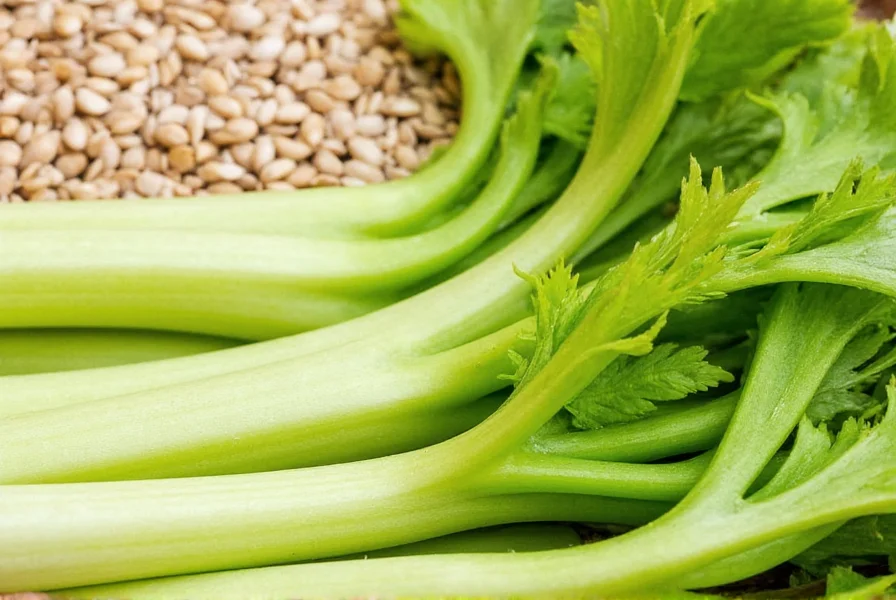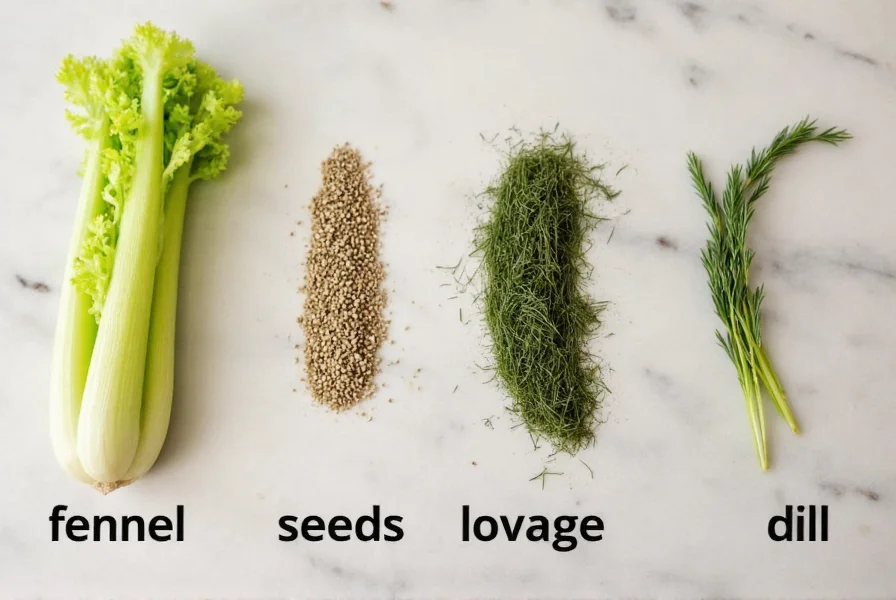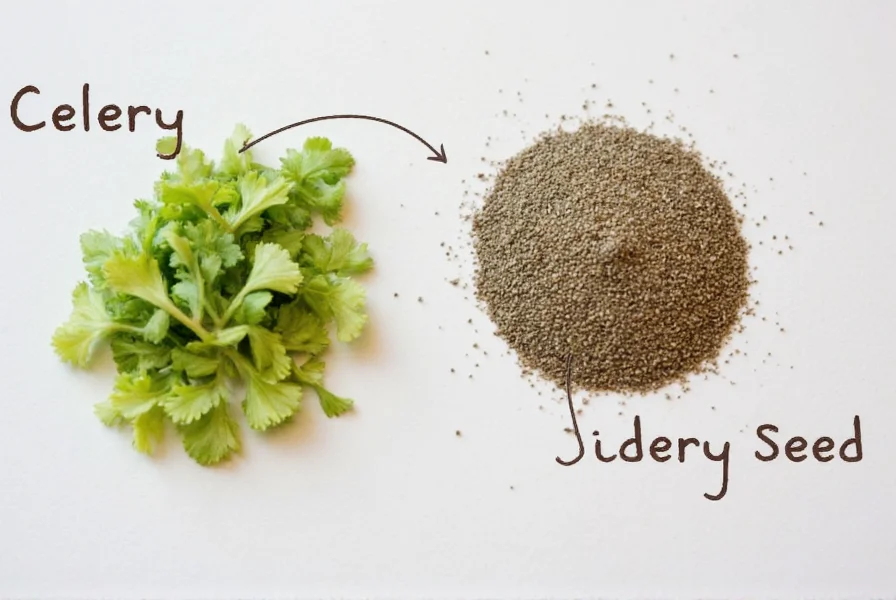When you're in the middle of cooking and realize you're out of fresh celery, celery seed can serve as a practical alternative—but understanding the nuances is essential for recipe success. This comprehensive guide explores the science behind celery seed substitution, providing precise measurements, flavor comparisons, and practical applications for home cooks and professional chefs alike.
Understanding the Fundamental Differences
Celery seed and fresh celery come from the same plant (Apium graveolens), but their culinary properties differ significantly due to concentration and composition. Fresh celery consists of approximately 95% water, contributing both flavor and texture to dishes. Celery seed, meanwhile, contains the concentrated essential oils that give celery its distinctive taste, making it far more potent.

Precise Substitution Ratios for Recipe Success
Getting the measurements right is crucial when substituting celery seed for fresh celery. The following conversion chart provides accurate ratios for various cooking applications:
| Recipe Requirement | Celery Seed Amount | Best Applications |
|---|---|---|
| 1 medium celery stalk | 1/4-1/2 teaspoon celery seed | Soups, stews, casseroles |
| 1 cup chopped celery | 3/4-1 teaspoon celery seed | Sauces, dressings, meatloaf |
| Celery for crunch/texture | Not recommended | Salads, crudités, fresh applications |
| Celery for liquid content | Add 2-3 tablespoons liquid | Braised dishes, braises |
Flavor Profile Comparison: What to Expect
Celery seed has a more intense, slightly peppery, and warmer flavor compared to fresh celery's mild, vegetal, and refreshing taste. The seed contains higher concentrations of apiol and other essential oils that give it a more pronounced aroma. When substituting, consider these flavor implications:
- Celery seed provides stronger background notes but lacks fresh celery's subtle sweetness
- The seed's flavor develops more slowly during cooking than fresh celery
- Celery seed can become bitter if used in excess, especially in delicate dishes
- For best results, toast celery seeds lightly before use to enhance flavor complexity
Best Culinary Applications for Substitution
Certain recipes accommodate celery seed substitution better than others. Understanding which dishes work well with this substitution prevents disappointing results. The most successful applications include:
Cooked Dishes Where Texture Isn't Critical
Stews, soups, braises, and sauces represent ideal candidates for celery seed substitution. The cooking process breaks down fresh celery's texture anyway, making the seed's concentrated flavor an excellent replacement. For these applications, add celery seed early in the cooking process to allow flavors to meld properly.
Dry Rubs and Spice Blends
Celery seed shines in dry applications like rubs for meats, poultry, and fish. Its concentrated flavor penetrates proteins effectively. When creating celery salt substitute, use a 3:1 ratio of salt to celery seed for optimal flavor balance.
Limitations and When to Avoid Substitution
While celery seed works well in many applications, certain culinary situations require fresh celery's unique properties. Understanding these limitations prevents recipe failures:
- Salads and fresh applications: Celery seed cannot replicate fresh celery's crisp texture and high water content
- Drinks and juices: Fresh celery provides liquid content that seeds cannot replace
- Garnishes: The visual element of fresh celery stalks cannot be duplicated with seeds
- Low-liquid dishes: Adding dry seeds without additional moisture can make dishes dry
Alternative Substitutes When Celery Seed Isn't Available
If you don't have celery seed on hand, several alternatives can provide similar flavor profiles depending on your recipe requirements:
- Fennel seeds: Use 1/2 the amount of celery seed required (stronger anise flavor)
- Lovage: 1 teaspoon fresh lovage equals 1 stalk celery (very similar flavor profile)
- Parsley root: Provides similar earthy notes in cooked dishes
- Dill seed: Use sparingly as it has a more pronounced flavor than celery seed

Professional Chef Tips for Perfect Substitution
Experienced chefs employ several techniques to maximize success when substituting celery seed for fresh celery:
- Toast seeds first: Lightly toast celery seeds in a dry pan for 1-2 minutes to enhance flavor complexity before grinding
- Adjust seasoning timing: Add celery seed early in cooking for soups/stews, but later for delicate sauces
- Balance with acid: A small splash of vinegar or lemon juice can help balance the concentrated flavor
- Combine with other aromatics: Pair with onion powder or garlic powder for more rounded flavor in absence of fresh celery
- Start low, taste often: Begin with less seed than you think you need and adjust gradually
Common Recipe Applications and Adjustments
Understanding how to adapt specific recipes ensures successful substitution. Here's how to modify popular dishes:
- Chicken soup: Replace 3 stalks celery with 1 1/2 teaspoons celery seed; add extra 1/4 cup broth to compensate for missing liquid
- Tuna salad: Use 1/4 teaspoon celery seed plus 1 tablespoon diced apple for texture
- Stuffing: Substitute 1 cup chopped celery with 3/4 teaspoon celery seed and 2 tablespoons apple juice
- Vegetable broth: Replace celery with 1 teaspoon celery seed per quart of broth
Storage Considerations for Optimal Flavor
Proper storage affects the potency of celery seed when used as a substitute. Whole celery seeds retain their flavor for 2-3 years when stored in an airtight container away from light and heat. Ground celery seed loses potency more quickly—use within 6 months for best results. For maximum flavor when substituting, grind whole seeds just before use.
Final Recommendations for Successful Substitution
When substituting celery seed for fresh celery, remember these key principles for culinary success: start with less than you think you need, compensate for missing liquid content in cooked dishes, and understand that texture cannot be replicated. The substitution works best in cooked applications where flavor matters more than crunch. By following these guidelines for substituting celery seeds in recipes and understanding celery seed to fresh celery conversion, you'll maintain recipe integrity even when fresh celery isn't available.











 浙公网安备
33010002000092号
浙公网安备
33010002000092号 浙B2-20120091-4
浙B2-20120091-4